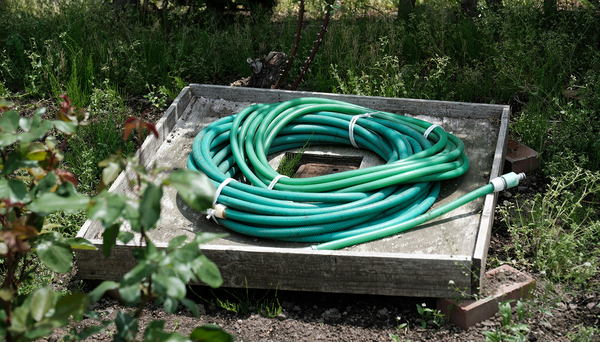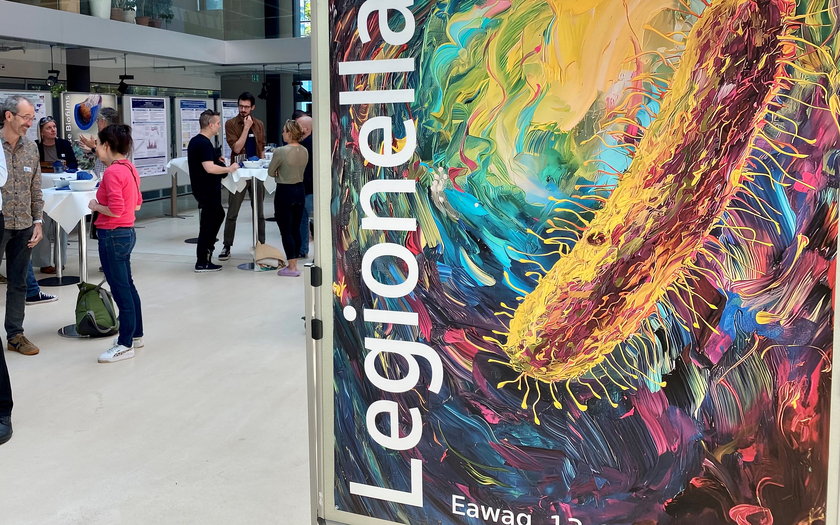News Detail
The next few years in Legionella research
August 6, 2025 |
Legionella bacteria are found wherever there are damp and wet conditions such as water pipes, showers, boilers, garden hoses and compost. The pathogen causes Legionnaires' disease and Pontiac fever, and the number of infections has risen steadily over the last 20 years since measurements began. ‘Legionella bacteria are found almost everywhere. They can only be contained with targeted measures,’ says Frederik Hammes, a researcher at Eawag's Environmental Microbiology department and co-author of the study.
To combat this widespread pathogen and implement these targeted measures, further research is needed, as well as close cooperation between science, industry, and politics. This is the conclusion reached by a team of researchers in their paper ‘Foresight 2035’, which was recently published in FEMS Microbiology Reviews. In it, researchers from Eawag together with other scientists from different international institutions and fields of research, led by Frederik Hammes, summarise the issues that should be addressed in the coming years.
The starting point for the paper was a Legionella management symposium in 2024 at the Swiss aquatic research institute Eawag, which brought together numerous stakeholders from a wide range of disciplines and subject areas. As Hammes explains, ‘Legionella research touches on many different areas, including sanitation and building technology, engineering, microbiology, politics and, of course, medicine.’ Cooperation between politics, industry and science is the way forward to not only control but also contain Legionella infections. In their paper, the researchers highlight various problem areas that will be relevant in the coming years.
Legionella likes it warm – but not too warm
One of these potential new challenges is climate change. The team concludes that climate change will play a decisive role in the spread of Legionella in the future. Not only does Legionella grow faster at warmer temperatures, but there are also new risks for humans of becoming infected with the pathogen. While the population combats the heat with air conditioning, the devices themselves are sometimes an ideal home for the bacteria.
Efforts to save energy can also play into the hands of Legionella, for example when it comes to hot water consumption. If temperatures are lowered when showering or washing dishes to save energy, for example, the sanitary pipes provide ideal conditions for Legionella bacteria. This raises the question of how Legionella can be prevented under these conditions: Are additional disinfection methods required? And how can water systems such as boilers and pipes be optimised? These questions must be answered in collaboration with industry.
Legionella bacteria grow everywhere, but they are not dangerous everywhere
A key aspect of the research efforts is also to find out where people can become infected. A defective boiler can be a breeding ground for Legionella bacteria, but it is unlikely that people will infect themselves there. The shower poses a greater risk, as we come into direct contact with contaminated water there. New technologies may also present potential sources of infection that are not yet known – these must be monitored proactively.
In addition, cooperation with hospitals and laboratories in research is becoming increasingly important, as not all Legionella bacteria are equally dangerous. Most of the disease is caused by Legionella pneumophila. The remaining 70+ known species are responsible for only about 3 – 5 % of cases. The reason for this is not yet fully understood and requires further research. Hospitals and laboratories will be able to provide important information in this regard in the future.
Even fifty years after the emergence of Legionnaires' disease, many questions remain unanswered – and with climate change and rapid technological developments in society, new areas are constantly emerging. The topic and field of research are complex and require intensive cooperation, forward-looking policies and intelligent sanitation and building systems. The paper that has now been published provides a good starting point for achieving this.
Infobox: LeCo project
In response to the growing number of cases of Legionnaires' disease in Switzerland, the Federal Food Safety and Veterinary Office (FSVO) launched the LeCo (Legionella Control in Buildings) project in 2020 in collaboration with the Federal Office of Public Health (FOPH) and the Swiss Federal Office of Energy (SFOE). The project came to an end this year. Five Swiss research groups joined forces to tackle the Legionella problem in this broad-based research project.
They have now published their findings in a series of videos:
Cover picture: Legionella bacteria also thrive in garden hoses and shower hoses (Photo: Unsplash).


